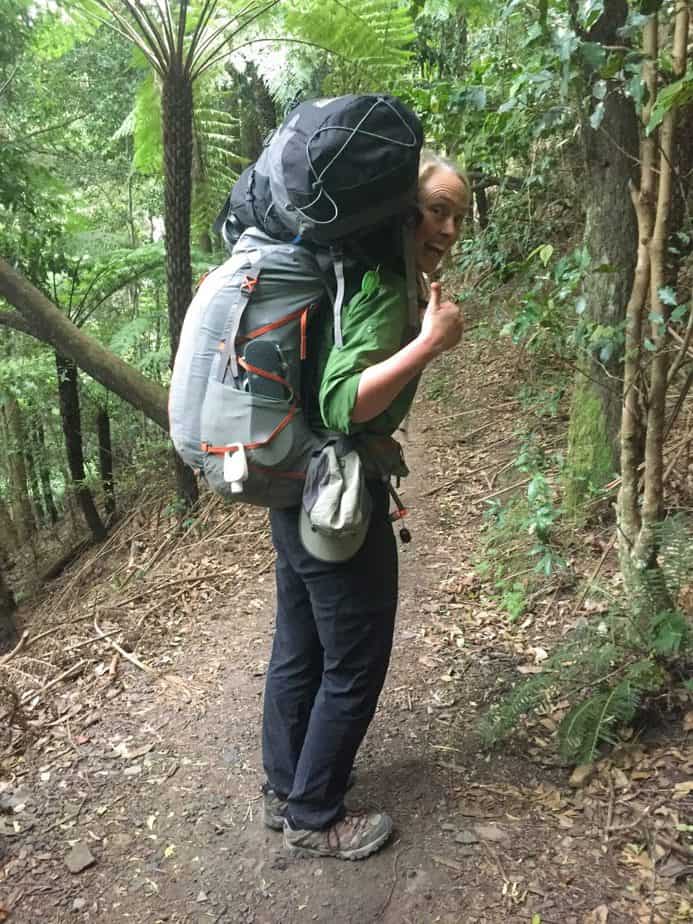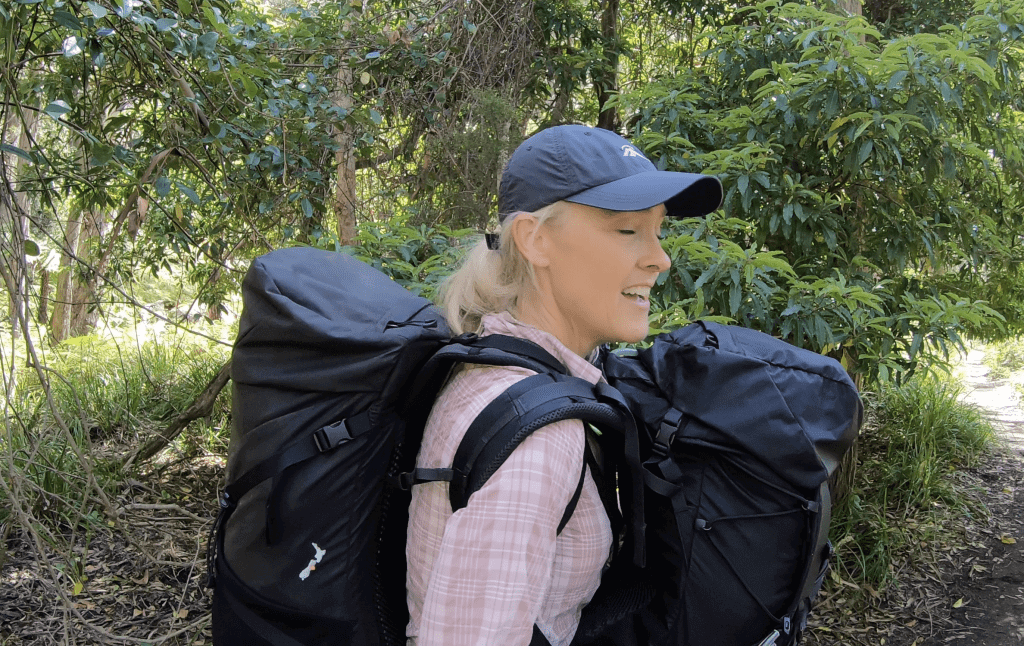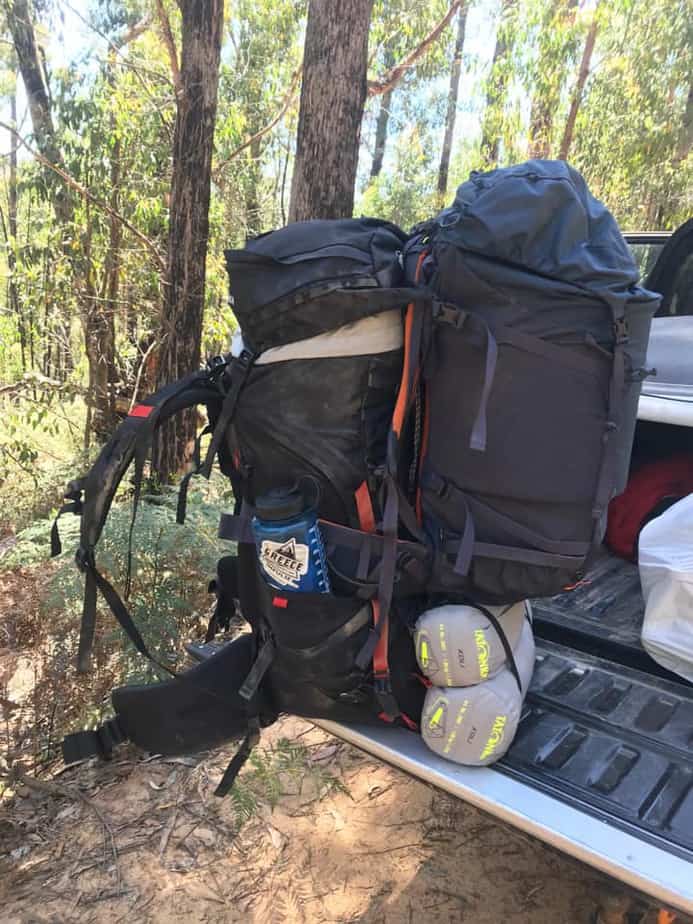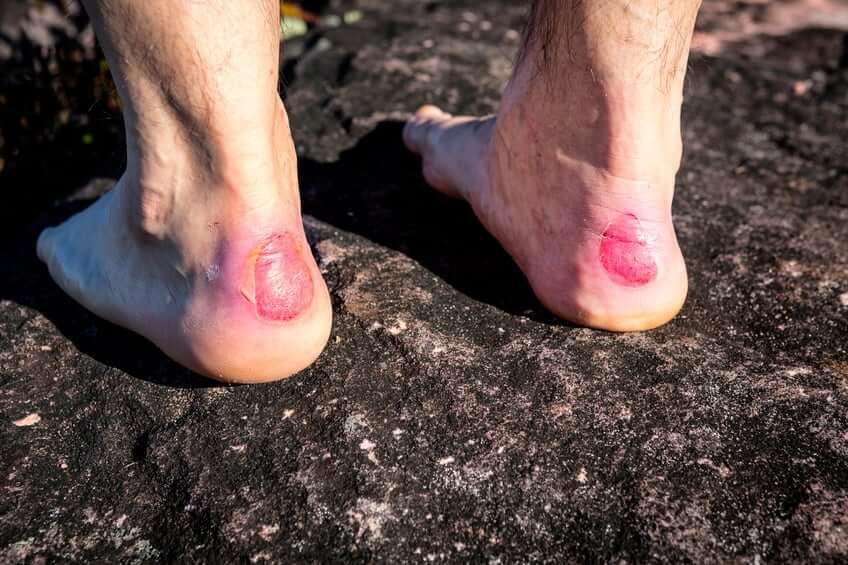Out in our wonderful, wild places, there are lots of reasons why you may need to carry two backpacks or practice the (not-so) subtle art of double-packing. The most common reasons are if someone has an injury or gets sick in the bush, or (more likely) has over-estimated their fitness for a trip or didn’t read the fine print about what was involved.
Sure, they may still be able to walk (what we call ambulant in first aid terms), even if it’s super slow, but having someone take their pack can make all the difference.
Try this first:
Before you go and crash-tackle them for their bag, (let’s face it, most people will be feeling pretty low at this point, embarrassed or ashamed that they’re holding up the adventure), here’s a few things to try first:
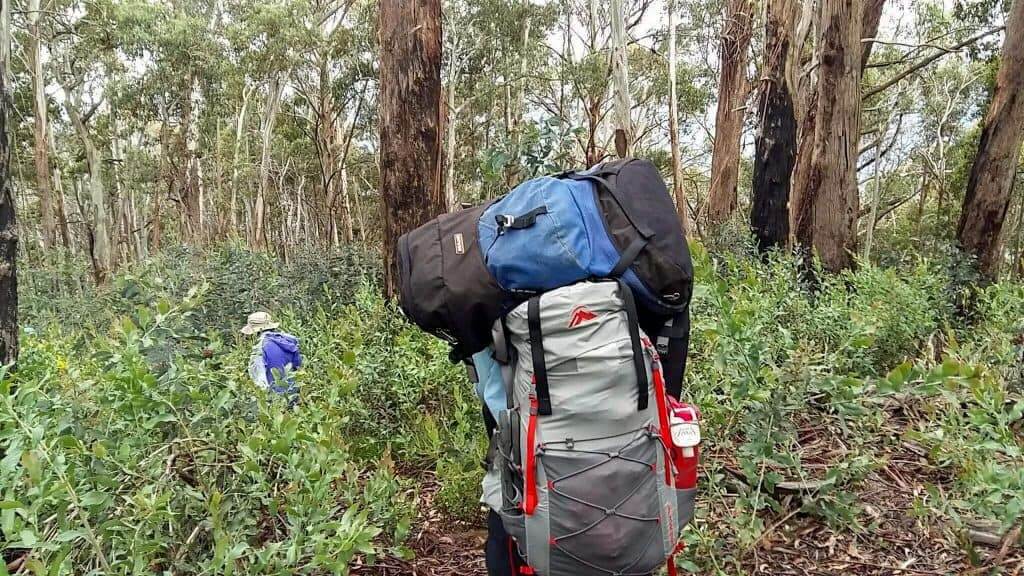
- Make contingency plans (routes A, B or C) when planning the trip for alternative exits if something goes wrong.
- If you have another experienced leader in the group (with adequate safety gear like first aid kit, map, comms, etc) – consider splitting the group into fast and slow and go with the route plan to suit each group.
- If it’s a fitness or illness issue and you notice someone struggling, revert to the tried, true and team-friendly practice of going at the pace of the slowest member. Don’t make a big deal of it or call it out, but drop your pace (as the leader) and maybe even make noises about wanting to have a conversation with them, bringing them up the front with you. Let them set the pace – whether they realise it or not.
- Learn a few different encouragement methods, stories to tell, tricks-of-the-mind that can help someone who is struggling. Strangely, giving someone the end of a short rope that you lead from in front can help, or let them count 10 steps and take a break… or 3 – whatever they need. Just be mindful of balancing their symptoms with pushing them too hard – you don’t want to make any issue worse.
- Take extra breaks, taking in views or a bit of silent forest-bathing. Ah.
- During one of these breaks, quietly suggest to them that you take a few things from their backpack to lighten the load. Try and make them feel as comfortable as possible about this, maybe tell them a story about how you were helped in the past or how much better/easier it will feel if you do.
- Spread these items quietly around the strongest, most experienced people in the group. A quiet word in their ear with a ‘secret pass’ whilst you head off to the loo, is a nice way of helping the struggling person feel less embarressed.
As a leader, we’ve always got the best interests of our group in our minds (or we should!). When it comes to duty-of-care, we might need to make the bad-cop-good-cop call and (warmly) insist on particular actions, bringing everyone into the discussion and explaining the reasons why. If the pace is going to affect the well-being, safety or other outcomes for the group, we might need to make some tough calls.
So, if after trying the options above and the continued slow pace is going to adversely affect the group, you may need to carry two backpacks.
Here are 3 different methods on the art of double-packing, of which all start by spreading the contents of the pack around the group.
Wow, there are so many good reasons to not over-stuff your pack, going lightweight AND walking with a small group; being able to take a few bits of your mates kit is just another.
1. Baby on Board
This is my favourite method because it uses the existing harness and support system of your own pack, maintains your centre of gravity and importantly, gives you great visibility of your feet and the track ahead.
- If possible, share the contents of the new pack around the group. This will lighten the weight and reduce the bulk.
- Slightly lengthen the shoulder straps of your own pack to create more of a shelf to receive the pack.
- You may benefit by checking your hip belt is firm and slightly higher than normal.
- Hoik! the new pack up on top and lay on it’s side (see video). Having someone help you do this could be good.
- For added stability, you could use the shoulder strap of the new pack high around your forehead.
2. Overdue Baby
This is the most common method, which unfortunately restricts your view and makes it hard to place your feet. This isn’t great for technical, single tracks, with tree roots, rocks, steep ascents/descents or other obstacles. This one is best reserved for well-formed fire trails with little need to see where you’re putting your feet.
- If possible, share the contents of the new pack around the group. This will lighten the weight and reduce the bulk.
- If the new pack is very tall, think about switching it with your own pack (on your back) and taking the shorter pack at the front to increase visibility.
- Face the shoulder straps of the new pack.
- Slide your arms into the shoulder straps and adjust for comfort.
3. Koala Baby
The credit for this method goes to Adrian Manikas from Absolute Outdoors, a tour operator in the Grampians. He shared this photo on my Facebook and got a few comments… not the least of which was about how helpful a ute can be in carrying someone’s pack!
Adrian says, ‘This (strapping the two packs together) is my first go-to. But if it’s a big pack or a long carry, it gets a bit tiring and sore in the neck!’
Slightly different to his image above, he recommends:
- If you’re investing time, turn the second pack upside down and use the waist band to wrap around and attach to the top of your own pack.
- If the chest strap reaches, you can secure it around your own pack too.
He reckons, ‘If you do it right – it’s awesome. If you do it badly, then there’s too much weight hanging backwards… but still better visibility than the Overdue Baby!’
You might also like:
- How to train for a heavy pack
- What to pack for an overnight hike
- 7 reasons why First Aid training is important (the story of Margot in the top photo!)
- What’s in my First Aid Kit?

